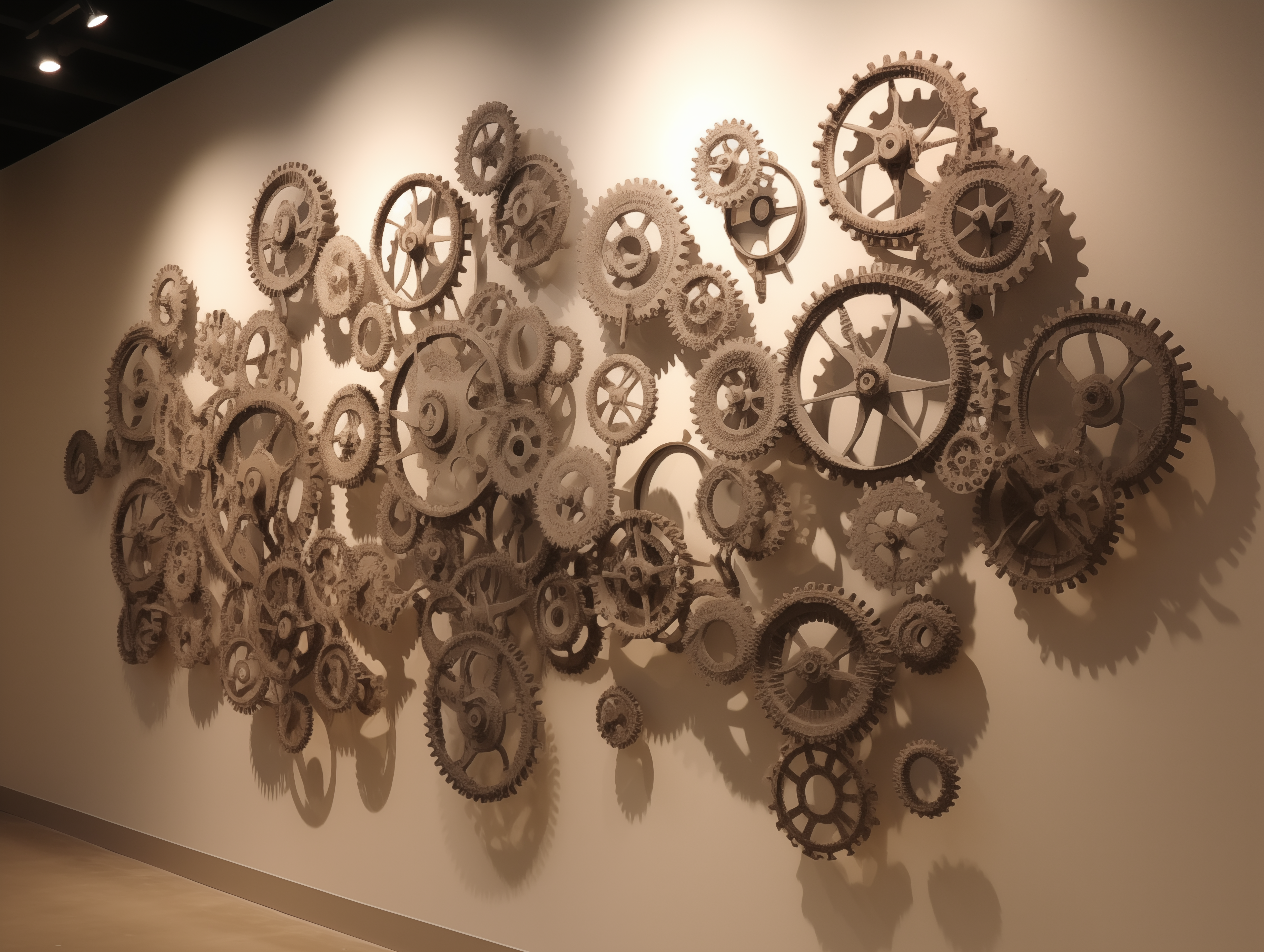Art is often seen as something static, fixed in place, meant to be admired from a distance. But what happens when art refuses to stand still? Enter
kinetic art, where motion becomes as integral as the material itself. It’s art that moves—sometimes gracefully, sometimes unpredictably—and in doing so, it transforms the way we engage with it.
Kinetic art merges creative vision with engineering ingenuity, creating pieces that interact with their environment and invite viewers to experience art in a whole new way. In this blog, we’ll explore the mechanics behind these dynamic sculptures and the profound emotional impact they leave on those who witness them.
The Origins of Kinetic Art
The roots of kinetic art trace back to the early 20th century, as artists began to challenge traditional notions of stillness in sculpture. Futurists like
Umberto Boccioni and Dadaists such as
Marcel Duchamp experimented with movement, whether implied in form or actual. Duchamp’s
Bicycle Wheel (1913), a simple combination of a wheel and a stool, is considered one of the first kinetic sculptures, blurring the line between art and everyday objects.
But it was
Alexander Calder, with his iconic mobiles in the 1930s, who truly brought kinetic art into the spotlight. Calder’s hanging sculptures, powered by air currents, transformed galleries into living environments. Each mobile’s delicate balance and unpredictable movement created a sense of wonder, reminding viewers that art, like life, is in constant flux.
The Mechanics Behind the Motion
At its core, kinetic art is a dance between artistry and engineering. Each piece is meticulously designed to achieve movement, whether powered by natural forces, machinery, or human interaction. Let’s look at the mechanics that make kinetic art possible:
1. Wind and Air Currents
Calder’s mobiles are perhaps the simplest example of motion powered by air. Using precise calculations of weight and balance, Calder created sculptures that could move gracefully with even the slightest breeze. This delicate engineering ensures that no two movements are ever the same, making each interaction unique.
2. Mechanical Systems
Many kinetic sculptures rely on intricate mechanical systems. Motors, gears, and pulleys bring these pieces to life, creating motion that can be as simple as a gentle rotation or as complex as a series of synchronized movements.
For example,
Jean Tinguely, a Swiss artist, built whimsical kinetic machines that often destroyed themselves during performances. His chaotic, gear-driven sculptures were as much a commentary on industrialization as they were an exploration of motion.
3. Natural Forces
Some artists harness natural forces like gravity, magnetism, and wind to create movement.
Theo Jansen, for instance, creates massive, skeletal structures called
Strandbeests that “walk” along beaches, powered solely by wind. These creatures, made of lightweight PVC pipes, are feats of engineering brilliance, mimicking lifelike motion while remaining entirely mechanical.
4. Interactive Components
Many contemporary kinetic sculptures invite viewers to become part of the experience. Sensors, touch-sensitive surfaces, or manual cranks allow the audience to activate or manipulate the piece, bridging the gap between artist and observer.
The Emotional Impact of Kinetic Art
Kinetic art doesn’t just move physically—it moves people emotionally. Watching a sculpture shift, sway, or come to life sparks a sense of wonder and curiosity that static art rarely achieves.
1. The Element of Surprise
The unpredictability of kinetic art keeps viewers engaged. A mobile’s gentle sway or a sculpture’s sudden shift feels almost alive, making the experience deeply personal. Theo Jansen’s Strandbeests, for example, evoke both awe and playfulness as they “walk” with a mechanical elegance that feels strangely human.
2. A Meditation on Change
Kinetic art reflects the impermanence and unpredictability of life. Just as a mobile’s motion depends on its environment, so too do our lives shift and change with unseen forces. Calder’s mobiles, with their ever-changing forms, remind us to embrace the fluidity of existence.
3. A Bridge Between Art and Science
The fusion of creativity and engineering in kinetic art appeals to both sides of the brain. It’s a celebration of human ingenuity, where physics, mathematics, and mechanics become tools for artistic expression. For viewers, understanding the complexity behind the motion enhances their appreciation, creating a deeper connection to the piece.
The Global Significance of Kinetic Art
Kinetic art is not confined to one culture or place; its universality lies in its ability to connect with people across boundaries.
- In Europe, Jean Tinguely’s mechanical creations spoke to the anxieties of the industrial age.
- In Asia, artists like Takis incorporated magnetism and energy into their works, blending modernity with ancient philosophies about balance and harmony.
- In the Americas, kinetic installations in public spaces invite communities to interact, fostering dialogue and shared experiences.
This adaptability has made kinetic art a powerful medium for addressing cultural, environmental, and social themes in a way that resonates universally.
Why Kinetic Art Matters
Kinetic art captures something primal: the beauty of movement. It challenges traditional ideas of sculpture, transforming static objects into dynamic experiences. By merging artistry with engineering, kinetic art invites us to marvel at both human creativity and the natural forces that shape our world.
Whether it’s Calder’s delicate mobiles, Tinguely’s chaotic machines, or Jansen’s walking beasts, kinetic art reminds us that motion is not just a medium—it’s a metaphor for life itself.




